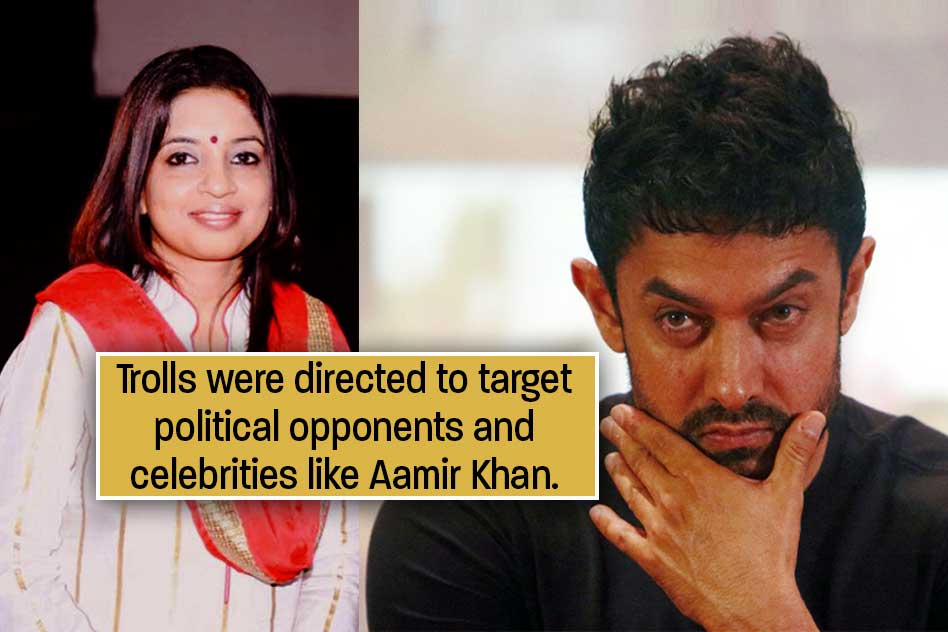
Trolling And Abuse On Social Media Undermines Debate & Creates A Culture Of Fear
29 Dec 2016 11:40 AM GMT
Editor : Sudhanva Shetty Shetty
Writer, coffee-addict, likes folk music & long walks in the rain. Firmly believes that there's nothing more important in a democracy than a well-informed electorate.
We are descending into an era of trolls. Internet trolls who disrupt conversations by posting divisive, sexist, racist, and xenophobic content are hijacking social media interaction. When they work alone, they have the aim of deviating debate and entertaining themselves. However, there is a growing trend of “troll armies” where several trolls coordinate attacks on a single person/organisation or under a single argument and attack anyone who even slightly disagrees with their line of thinking. This creates a culture of fear where death threats, rape threats, ad hominem, falsehoods, half-truths, offensive language, and psychological abuse is the norm.
Trolling is no longer an isolated problem affecting only a few outspoken or popular individuals. Today, it is an enterprise of its own. It is funded by governments and organisations to voice vociferous support for one cause or argument on social media sites and to quell any opposition to that argument through slander and profanity. This not only creates a situation where the debate is diluted, and misinformation is everywhere: it also forces the general public to resort to self-censorship.
Sadhavi Khosla’s revelations
In the past week, there have been several news reports regarding a former BJP worker named Sadhavi Khosla revealing that she was part of a social media team coordinated by the BJP to troll public personalities perceived as opposed to the party. Khosla told that the primary targets were political opponents and celebrities like Aamir Khan who the party felt were critical of the administration. The trolling would often evolve to become vehemently sexist and divisive, and it would be particularly concentrated and ugly when the target was a woman.
Since Khosla’s revelations, the head of BJP’s IT cell Arvind Gupta has called her accusations “false” and a form of “self-promotion”. He went on to brand Khosla a Congress supporter and called for a “peaceful economic boycott” of her book.
Political trolling is a toxic phenomenon
Whatever opinion we may have on Khosla’s revelations, there can be no denying that trolling is both a real and grave problem. It can be easily argued that trolling is mirrored by the deepening polarisation of public opinion and the rise of populism in many countries. However, we must also understand that trolling in itself can deepen polarisation of public opinion and enflame populism in countries.
Political trolling as a mainstream issue has its roots in the 2016 US Presidential election. Russian involvement in swaying American public opinion against Democratic nominee Hillary Clinton has repeatedly been vindicated. Furthermore, the advent and threat of fake news was acknowledged by many public personalities from Barack Obama to Angela Merkel, and Facebook which conceded to taking strict action against fake news sites. The issue of trolling and false news began to explode when many prominent politicians began sharing links from fake news sites, and some of them like Donald Trump even encouraged or engaged in online harassment of individuals.
Trolling and online harassment in India
In India, political trolling is a serious issue. This is because we have a burgeoning social media population with over 50 million accounts on Whatsapp, nearly 200 million users on Facebook, and 153 million active social media users. A study conducted in 2014 revealed that almost 50% of Indian youth have experienced bullying or have been involved in bullying online. 70% of them have posted their contact details like home addresses and phone numbers on online forums, and 53% have met someone in person who they first met online. Many teenagers ‘reinvent’ their persona online due to peer pressure, and often try or post dangerous things to get more likes/shares. Additionally, statistics show that 20% cyber-bullied teenagers think of suicide.
Statistics regarding online harassment
Victims of trolling tend to be mostly between the ages of 18 and 29. In Pew Research’s first report on internet harassment (2014), it found that 40% of internet users has been personally subject to online harassment, 73% had witnessed it happen to others, and 24% of users had seen someone been harassed for a sustained period.
It is important to note that trolling affects men and women disproportionately. A study by British think tank Demos found that men get more abusive messages on social media, and men send three-quarters of abusive messages. The same survey also discovered that online abuse is especially high for female journalists and female politicians. Additionally, one in four women between the ages of 18 and 24 reported being stalked or sexually harassed online, a rate nearly three times higher than among men the same age. Furthermore, a GLSEN report found that women of colour and members of the LGBT community tend to face especially fierce online harassment.
The Logical Indian take
Trolling and online harassment – both of which invariably go hand-in-hand – have grave consequences for democracy. When information is polluted, the national debate is corrupted, and democracy is weakened. Trolls foster a culture of fear where people are forced to resort to self-censorship out of fear of harassment. Former Australian Prime Minister Julia Gillard warned that online abuse could deter women from entering politics, where the sex ratio is already extremely skewed.
Trolling is the basest form of dialogue on the internet. It appeals to those who subscribe to the lowest common denominator of public taste. It is also contagious and inflammatory. As social media users and responsible citizens, we have a duty not to resort to trolling or to stoop to the level of trolls. This is not an issue of party politics: it is a matter of civility and basic decency.
 All section
All section













